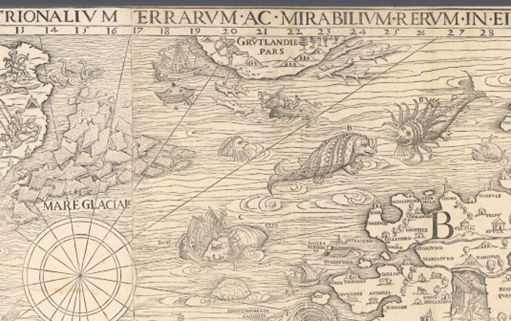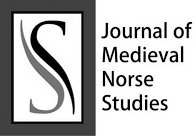Sea monsters, navigation and politics at edge of the world: An interpretation of a Olaus Magnus’ "Carta Marina" (1539)
Abstract
A section of the Carta Marina (1539), showing Greenland at the upper edge of the map. (Uppsala University Library, Public Domain Mark 1.0, Own endorsements).
The 16th century sea map, commonly known as Carta Marina, by the Swedish archbishop in exile, Olaus Magnus, monsters roam the Atlantic. This article offers an interpretation of these monsters as carriers of symbolic meaning, and as messengers of specific, coded messages. Rather than being just figments of myth or superstition, or purely decorative, they must be seen as visual political comments or practical indications of dangerous waters. This interpretation undeniably demystifies the fantastic map, though the possibility of a symbolic meaning do not have to take away from either their decorative quality; og the realm of religious mysticism.
Olaus Magnus’ strategic use of monsters shows that the monsters themselves were not at the centre of his world view. Rather, it was the humans, their role on the sea and their political behaviour. For Olaus Magnus, it was not about the mysterious creatures of the sea - let alone whether they existed or not - but about the viewer of the map's ability to decode the messages they held.
Downloads

Downloads
Published
Issue
Section
License
The author (s) of the original submitted undertake to comply with the following:
- All authors are publicly responsible for it.
- The authors claim that this original is their own and that they assume full responsibility to third parties, whether moral or patrimonial, by reason of its content, stating that the work does not infringe any intellectual property rights of third parties.
- The author (s) agree to the copyrights of the original to Scandia Journal, to which they grant permission for its reproduction, editing and online publication.
- The author (s) grant their copyright of their original to the Scandia Journal, licensed under the Creative Commons Attribution License, which allows the sharing of this work with the acknowledgment of their authorship.
- The author (s) have permission and are encouraged to cite and distribute their original.


